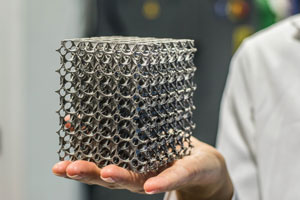3D printing is revolutionizing how we create products. For a few hundred dollars, we can now buy printers that can print plastic 3D models, which can help us conceptualize ideas, and in some cases, these models can even be used as working devices. More advanced printers available for as low as $10,000 can be used to print carbon fiber and form very solid and reliable parts. Many small parts that used to be machined are now reliably made using these carbon fiber printers. Small items such as brackets, couplers, small mechanical gears, and covers can be made quickly and cost effectively. Parts can be printed in a few hours and files can be sent directly to the printer from a 3D drawing, reducing the amount of work required for the design.
Additionally, 3D printing gives a designer more freedom by permitting much more complicated designs to be manufactured than would be traditionally allowed. The constraints of figuring out how to construct a part using the equipment in a machine shop are removed.

For the price of a CNC machine (approx. $100,000), it is even possible to get a printer capable of printing metal parts. Metal 3D printing is a very exciting method for the manufacturing industry, as it can replace complicated processes such as casting or machining. It also has the potential to be used to create replacement parts on demand. When considering using a metal 3D-printed replacement part, it is important to understand that while the part may be dimensionally the same as a machined part, the final chemistry, microstructure, and internal stress (residual stress) may be completely different.
Residual stress affects fatigue life, so careful control of it is necessary to ensure that a part does not fail prematurely during use. In particular, compressive stress is generally beneficial to a part and helps keep cracks closed, slow down crack propagation, and delay failure. X-ray diffraction is a common method used to measure the residual stresses present in parts after fabrication; dedicated residual stress diffractometers are used for this purpose. The part is placed in the diffractometer, and the angle of the diffraction peak can be used to determine if the material is under strain. As the strain changes in the material, the diffraction peak will shift up or down in angle depending on whether the part has compressive or tensile stress present. The scan typically takes a few minutes. The strain can then be converted to a stress, which is then evaluated to determine whether additional processing, such as heat treatment or shot peening, is required to modify the residual stresses.
In recent work, Proto has found that 3D-printed parts can often have very different residual stresses than their traditionally machined counterparts. As a result, XRD is proving to be a valuable tool to ensure that 3D-printed parts are as safe and reliable as machined parts and can act as suitable replacements.

